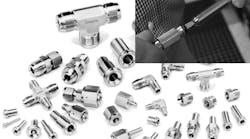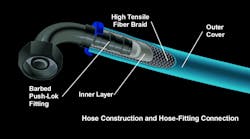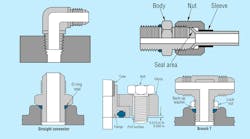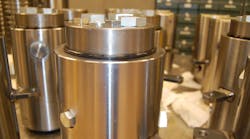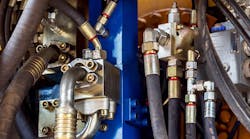In front of you is an NPTF tapered-thread assembly. The recommendation is to turn, not torque, to tighten the assembly. But all you have is a torque wrench. Or maybe you have an SAE straight-thread port assembly, which has a suggested assembly torque, and your torque wrench is nowhere in sight. The inevitable question pops up: Can’t you just crank that fitting down and be done with it? Tight is tight, right?
Short answer: No. Turn refers to the number of turns you rotate the fitting to make a tight connection. Torque refers to how much torque you apply to make a tight connection. The difference may seem trivial, but it isn’t.
In the case of torque, we use a calculation to determine how much torque hydraulic threads can handle without being damaged. Going greater or less than the recommended torque can lead to leaks. This likely makes sense if you don’t apply high-enough torque—it’s pretty obvious that a loose fitting will leak. But it can also leak if you apply too high a torque.
When you tighten a fitting, in some circumstances you’re actually deforming the metal. That can damage threads and sometimes the fitting, making it unfit for reuse. In other circumstances, an O-ring could be pushed down into the female threads, compromising the seal of the connection. Additionally, if that O-ring is old or dry, it can crack under excessive pressure, leaving you without a proper seal and, again, the possibility of leaks. The same holds true for the methods requiring turning the fitting. So even if you think you’re an assembly master, when you tighten based merely on your sense of what feels right, you have most likely over-tightened your fitting.



